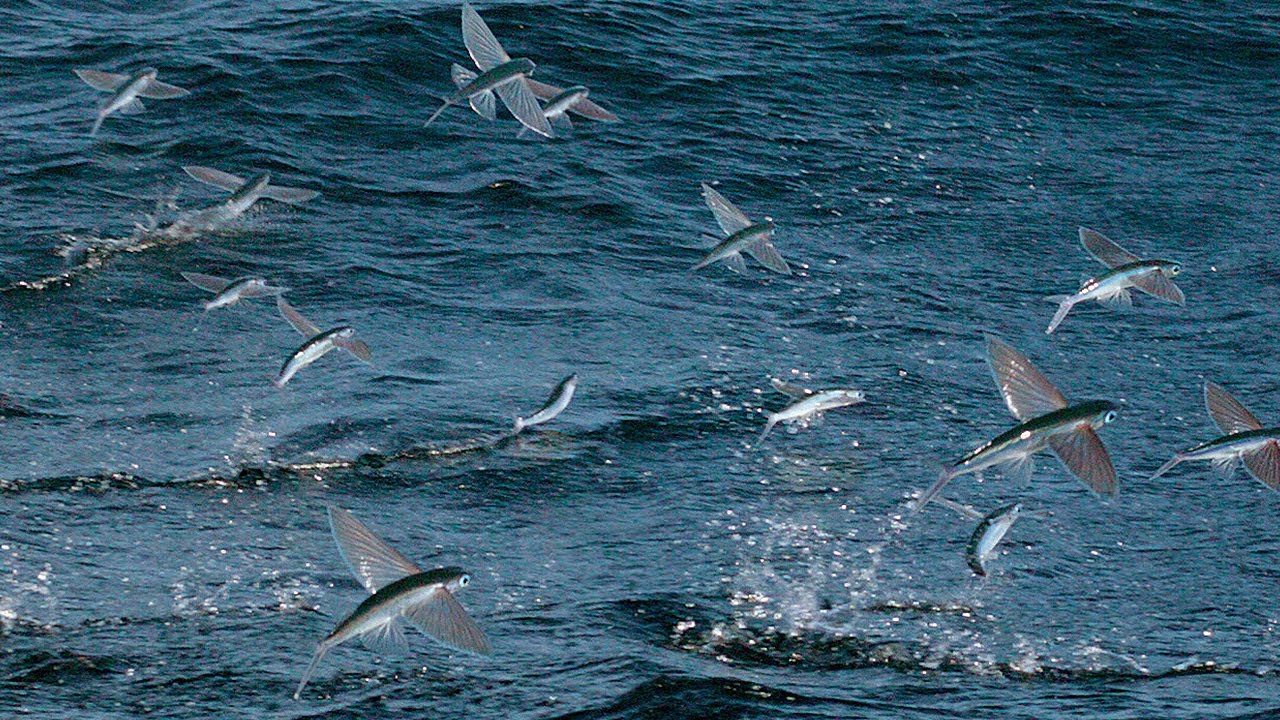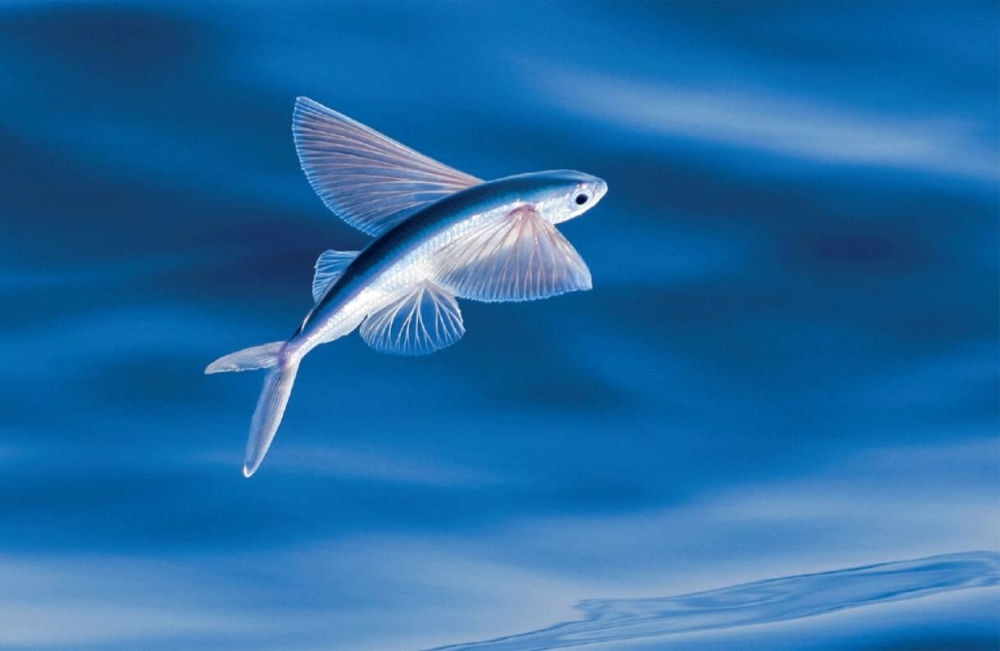Flying fish
The Exocoetidae, commonly known as flying fish, erupt from the water and can stay in the air at speeds of more than 35 miles (56 kilometers) an hour. Once in the air, their rigid “wings” allow them to glide for up to 650 feet (200 meters) for up to 45 seconds, but they do not fly. There are approximately 64 different species of flying fish, and they do indeed migrate.
Like a bird, the airborne fish stretches its long, wing like pectoral fins and tilts them upward. The fish glides through the air thanks to the lift provided by the wind passing under and over the wings. To keep the glide running, the fish slaps the water with its tail.

The primary purpose for this action is to avoid underwater predators such as swordfish, mackerel, tuna, and marlin, and many others, even though their cycles of flight expose them to avian predators such as frigate birds. Flying fish eat several foods, including plankton, to stay alive.
Flying fish are tropical and temperate fish species that can be found off the coasts of the United States on both the Atlantic and Pacific Oceans. Barbados is regarded as “the land of the flying fish,” with the fish serving as one of the country’s national symbols. It migrated between the warm, coral-filled Atlantic Ocean surrounding Barbados and the plankton-rich outflows of Venezuela’s Orinoco River when it was abundant. The majority of flying fish live in the open sea, but some live on the outskirts of coral reefs. Flying fish are commercially fished in Japan, Vietnam, and China by gillnetting, and in Indonesia and India by dip netting. Flying fish are susceptible to light, and since they prefer to leap into small, well-lit boats, they are relatively easy to capture.

Breeding takes place above the water’s surface in the open ocean. Female lays eggs, which are bonded to seaweed and floating debris by sticky fibers. Newly hatched flying fish have whiskers near their mouths that help them blend in with the environment and shield them from predators. Flying fish can grow up to 18 inches (45 centimeters) in length, but most are between 7 and 12 inches (17 to 30 centimeters). The average lifespan of a flying fish is five years.


